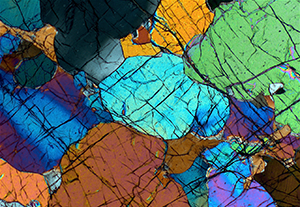July 8, 2016 - Jessica M Warren
Hydrothermal alteration of seafloor peridotites does not influence oxygen fugacity recorded by spinel oxybarometry
An article by Suzanne Birner, Jessica Warren, Liz Cottrell, and Fred Davis has been published in the July issue of the journal Geology. This article is available online via open access.
In the Pacific Ocean, north of New Zealand, the collision of two tectonic plates has created the Tonga Trench, a massive gash in the sea floor, miles deep. The walls of this trench expose rocks from the Earth’s interior, below the crust. In the article, we document how, despite large degrees of chemical degradation, these rocks still have a lot to tell us about the Earth. The rocks recovered from Tonga are unique in that some of them are perfectly fresh, with essentially no degradation from seawater. We use the alteration range of this suite of rocks, from fresh to corroded, to show that some chemical properties of the original minerals are unaffected by alteration. This result allows a wider range of seafloor rocks to be used to study the Earth’s interior. In particular, these samples can be used to study the oxygen content (fO2) of Earth’s deep interior, which has important implications for understanding how the planet and atmosphere have changed through time.

Fresh peridotite from the Tonga Trench, which reveals mantle minerals’ resilience to seafloor alteration. Image width = 1.2cm. Credit: S. Birner.